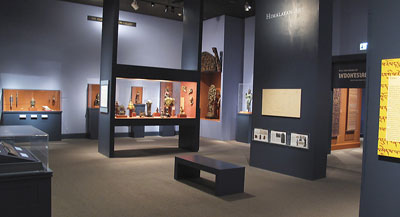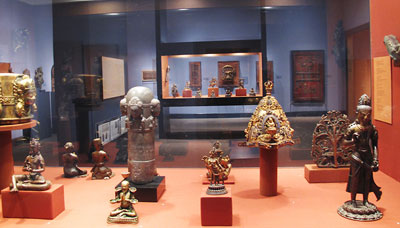Museums may be perceived as slowly evolving creatures, but in recent years LACMA has expanded its campus, developed its collections, and received many new acquisitions. I've wondered if all this growth has left some of our older galleries undervisited. They are the underdog galleries, and I was determined to find them.
Why would I want to seek out the least-visited areas of the museum? Because I believe that sometimes the best museum experiences are self-driven, isolated and solitary, where you can examine both the art and how you relate to it without being disturbed or distracted. A museum offers a variety of experiences; some are easily revealed, while others are hidden just out of sight.
To start, I turned to LACMA's statistical data, but it was of little use as it focused primarily on traveling shows. So my mission was to take a daytime excursion through the galleries during peak hours in search of visitors, or in this case, lack thereof. The result? There were two galleries that were clearly the loneliest. Both are at the ultimate extremes of the campus; one at its highest point and the other at its lowest.
The runner up was a small space in the Japanese Pavilion, tucked almost underneath the building. This cove of sorts, where scrolls are often displayed, is at the end of the building's long spiral. The gallery does benefit from residing near the restrooms, so occasionally I've seen people close by waiting for their significant others to reemerge. But the winner, if you can call it that, is in the Ahmanson Building.


To get there, you must go to the fourth floor, and walk all the way to the back—past the Islamic tiles and fragile glasswork, through the green and brownish rooms filled with ancient drums, pottery, and other South and Southeast Asian pieces, to the last deep blue Himalayan gallery, crammed with casework. The gallery is actually brimming with art, a treasure trove of intricate metalwork and objects fills the room, as sculptures hover above, waiting patiently, as if ready to spring to life at the sight of a visitor.
Paul Wehby, Senior Graphic Designer



